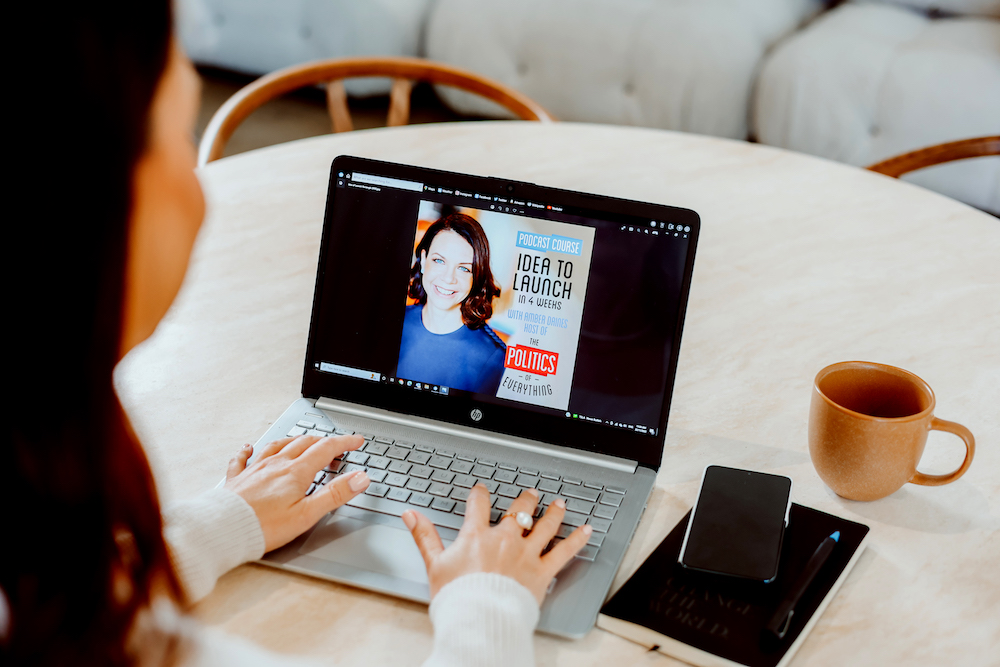Amber's Blog
Expert Ideas, Tools & Musings

Does anyone read the newspaper anymore?
Amber Daines | 17 June, 2022Newspapers are not dead. That said, they have certainly had to reshape their business model to survive over the past decade. But we’re living in a digitally obsessed world where news is shared on many platforms and not only from traditional media outlets. So, let’s talk about how to make the most of the modern media landscape.
Newspapers were once the undisputed main source of news, and the cornerstone of authority for everything from fashion styles to business and economics.
But those days have passed and newspapers have paid the price through lost subscriptions and fewer clicks – most people get their news online, and not just from newspapers. All mainstream media have embraced digital channels, and social media too.
The good news is that because we can all access and create news through our own channels, there are now numerous ways you can reach your audience without traditional media. The downside is that it can be harder to grab attention and hold it because there is so much more content out there – on websites, blogs, and social media platforms such as LinkedIn.
That’s why, when you are embarking on a media or communications strategy, you need to brush up your skills – across all areas.
You need to be able to articulate your messages quickly, give a good quote, and present well via radio and audio-visual mediums. In a digital world, it’s important to be relevant and it’s even more important to be clear and concise.
People don’t read as much as they used to – we see that rise of “snack journalism” with smaller news pieces we can read and understand in a few moments An 800-word blog (like this one) is good for your website, and you might even be successful in getting an op-ed piece in your industry publication, or the opportunity to provide a guest column in a newspaper or a business group newsletter, but in any space that’s not an off-shoot of a traditional print medium, then getting your message out will require good editing skills and some innovation.
Think 100 words max and get creative when it comes to how you package up your message and deliver it.
You also need to decide where you’re delivering it – you’ve got lots of choices, but a message can fall flat if you don’t embrace the style of the medium you’re using.
TikTok is not the same as LinkedIn – sure, that’s obvious. But it also means that you can’t just produce one piece of content and share it in several places. I’ve said this before too – delivering a podcast is also very different from fronting a video.
Video content formats are becoming increasingly popular as we become time-poor. Podcasts are easy to listen to in the car, while you’re doing the grocery shopping, at the gym, or cooking dinner. You can watch a video from the sidelines of soccer training, or while you’re waiting for a train, a plane … from the backseat of an Uber. You get the idea.
With this in mind, then at some point down the track, you’re going to have to get comfortable presenting in front of a camera.
During the pandemic lockdowns, endless Zoom calls gave us all a bit of training …. But slick digital content requires more than just fronting up with a great outfit and hair and makeup done.
You need to stand out, in terms of content and creativity, if you want views and shares in respectable numbers.
Presenting to video is not all that dissimilar to presenting to a live audience. The golden rule to successful presenting is to remember that your presentation is not about you. It’s about your audience.
The big difference, of course, is that on the video you’re close up and only you are in focus so you want to make the most of your facial expressions, body language, and vocal pace and tone. There is an ‘element’ of acting involved, for you to come across as confident, competent, and credible.
If you’re producing in-house then you will get several rehearsals and re-dos, but …. And I recommend this to all my clients – you really do want to hone your skills so that you can be a ‘one-take-wonder’ …
The reason for this is that as you build your own and your business’s online profile, then you’ll attract the attention of journalists and other kinds of content creators. When you collaborate with other professionals, live TV is a great example, you won’t always get a second go.
My experience as a seasoned speaker and former TV reporter has given me a great deal of insight into what makes a GREAT presenter … and how to teach simple tips and tricks to business owners and CEOs like yourself who want to get ‘camera-ready.’
Being comfortable in front of a camera or an audience is a must-have skill these days – it’s part and parcel of the way we do business and connect with customers and clients.
The pandemic may be over, but Zoom has become a vital tool for doing business. Think you’ll never be called to do anything more than host a meeting on camera? Think again.
Traditional face-to-face meetings such as sales presentations, meetings with boards and shareholders, and pitches to potential new clients or vendors, or funders are being replaced with AV technology. It’s cheaper and usually more effective for businesses to use these platforms than flying people to places for a two-hour meeting.
At Bespoke Communications we provide both one-to-one training and all forms of presentation skills training for teams. Contact us to find out more.
